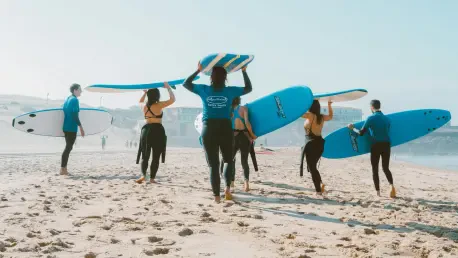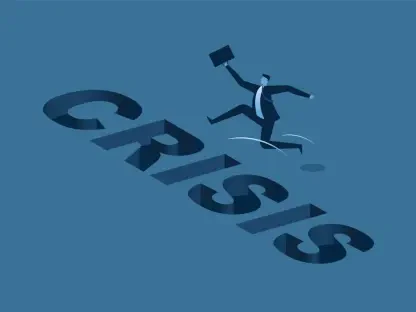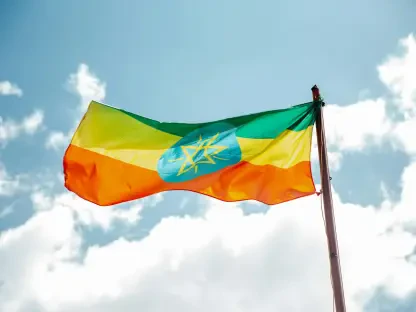In a groundbreaking moment for high school athletics, Hawaii has set a national precedent by hosting the inaugural Hawaii High School Athletic Association (HHSAA) surfing state championship at Ho‘okipa Beach Park on Maui, marking a historic event on May 1-2. This championship is the first time any state in the nation has recognized surfing as an official state championship sport, a testament to its deep-rooted cultural significance in the islands. The championship, organized by the Maui Interscholastic League (MIL), brought together young athletes from across Hawaii to compete in shortboarding, longboarding, and bodyboarding, with divisions for both boys and girls. The excitement surrounding this milestone reverberates through communities, as it not only elevates a beloved pastime to the level of traditional sports but also honors a legacy that defines Hawaiian identity. This historic achievement showcases a blend of athletic prowess and cultural celebration, paving the way for future generations.
A Long Road to Recognition
The journey to establish surfing as an official high school state championship sport in Hawaii spans nearly three decades of tireless advocacy and dedication. Spearheaded by individuals like MIL surfing co-coordinator Kim Ball, the effort reflects a persistent drive to integrate surfing into mainstream high school athletics. For 19 years, surfing existed as an unofficial club sport in Maui schools, gaining traction as an official MIL sport over the past decade. This slow but steady progress culminated in the statewide competition, a victory for advocates who saw the sport as more than recreation but as a vital part of Hawaiian life. The perseverance of these champions ensured that young athletes could finally compete on a platform equal to other sports, gaining the recognition they deserve. Their work highlights a broader movement to embrace culturally significant activities within educational frameworks, setting an example for other regions to follow with their unique traditions.
Beyond the advocacy, the emotional weight of this achievement resonates deeply with those involved in the sport’s integration. At a press conference announcing the championship, the pride and enthusiasm were palpable among stakeholders, including state officials and athletes. Hawaii Governor Josh Green spoke passionately about the event’s role in celebrating local culture, while Olympic gold medalist Carissa Moore shared insights on surfing’s transformative power. Moore emphasized how the sport fosters personal growth, builds community, and connects individuals to something greater than themselves. This recognition as a state championship validates the experiences of countless students who have long viewed surfing as a cornerstone of their identity. It also serves as a reminder of the importance of persistence in breaking barriers, ensuring that future generations inherit a legacy of inclusion and opportunity in athletics.
Cultural Significance and Community Impact
Surfing in Hawaii transcends the boundaries of sport, embodying a way of life that shapes personal and communal identity. Governor Green highlighted this during the championship announcement, noting that the event provides a platform for young athletes, or “keiki,” to stand shoulder to shoulder with peers in other sports. This acknowledgment reinforces the idea that surfing is a cultural pillar, woven into the fabric of Hawaiian history and values. The state championship not only offers a competitive arena but also celebrates the spirit of aloha, fostering unity and pride among participants and spectators alike. By elevating surfing to this level, Hawaii sends a powerful message about the importance of preserving heritage through modern avenues, ensuring that traditions remain vibrant and relevant for today’s youth. The event at Ho‘okipa Beach Park became a vivid display of this ethos, uniting communities in a shared appreciation of their roots.
The personal impact of this milestone is equally profound, as seen through the eyes of students like Kylie Sato, a junior from Leilehua High School. Having advocated for high school surfing since her freshman year, Sato expressed immense gratitude and excitement at witnessing her efforts come to fruition. Her story reflects a broader sentiment among young athletes who have poured their passion into the sport, often without formal recognition. For these students, the championship is more than a competition; it represents validation of their dedication and a chance to showcase their skills on a statewide stage. This personal connection underscores how such initiatives can inspire confidence and purpose, reinforcing the role of culturally rooted sports in shaping character. The voices of students like Sato add a human dimension to the event, illustrating its significance beyond policy and into the realm of individual dreams and aspirations.
Legislative Support and Broader Trends
The establishment of the surfing state championship would not have been possible without critical legislative backing that provided the necessary resources. Act 141, introduced by Representative Sean Quinlan and signed into law by Governor Green, secured funding to bring this vision to life. This legislative step mirrors a growing trend in Hawaii to recognize and promote sports with deep cultural ties, following the introduction of girls’ flag football as a state championship sport in recent years. Such actions demonstrate a commitment to diversifying athletic opportunities within the educational system, ensuring that students have access to a range of activities that resonate with their heritage. The support from state leaders reflects an understanding of sport as a vehicle for cultural preservation, setting a precedent for how policy can align with community values to create meaningful change across generations.
This championship also signals a potential shift in how states nationwide approach high school athletics, with Hawaii leading the way. By formalizing surfing as a competitive sport, the state not only elevates its status locally but also inspires other regions to consider integrating unique, culturally significant activities into their programs. The event at Ho‘okipa Beach Park serves as a model for blending tradition with modern competition, highlighting the benefits of such inclusivity for student engagement and community cohesion. As other states observe this pioneering effort, there’s potential for a ripple effect, encouraging a broader dialogue about the role of diverse sports in education. This trend underscores the importance of adaptability in athletic programs, ensuring they reflect the evolving identities and interests of the student body while fostering a sense of belonging and pride.
Reflecting on a Historic Milestone
Looking back, the inaugural surfing state championship at Ho‘okipa Beach Park stood as a powerful symbol of perseverance and cultural pride. It marked a culmination of decades of advocacy, uniting communities in celebration of a sport that defines Hawaiian life. Key figures like Kim Ball, Governor Josh Green, and Carissa Moore played instrumental roles in bringing this vision to reality, while student enthusiasm fueled its emotional resonance. As the event unfolded, it became clear that this was more than a competition; it was a testament to the enduring spirit of the islands. Moving forward, the focus should shift to sustaining this momentum by expanding opportunities for young surfers, perhaps through additional resources or interstate collaborations. Exploring partnerships with national athletic bodies could further elevate the sport’s profile, inspiring a new wave of talent. This historic moment laid a foundation for future growth, ensuring that surfing remains a vibrant part of Hawaii’s educational and cultural landscape.








